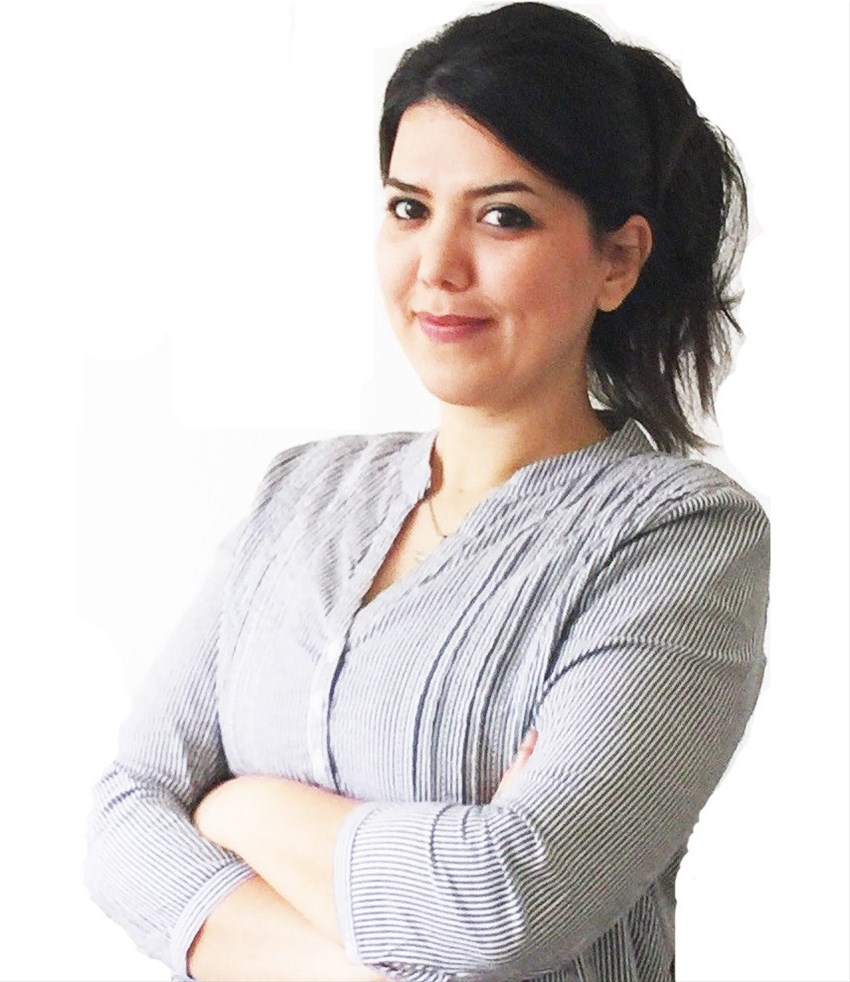Pioneering research about the EB-PBF as an additive manufacturing process on Alloy 718
28 Jan 2021
The aerospace, automotive, defence, marine and medical industries could benefit from Paria Karimi’s pioneering research on Alloy 718 in the electron beam-powder bed fusion (EB-PBF) process as an additive manufacturing technique. She explains how this process can be used more efficiently for producing multiple parts with better properties. She has also developed novel strategies for tailoring the microstructure of the products to improve their final properties.

Paria Karimi has developed strategies that make it possible to design a microstructure with more homogeneous properties. This can provide great benefits for manufacturers of aircraft engine components.
Over the past ten years, industry has increasingly shown interest in additive manufacturing (AM) using electron beam as the heat source. Products with this layer-on-layer manufacturing principle have many advantages and create completely new opportunities for many industries.
“With additive manufacturing techniques, it will be feasible to produce lighter and more complex components in one processing step. This leads to more efficient and environmentally friendly aircraft engines,” says Paria Karimi, who defended her dissertation at University West in December.
Paria has delved into how the electron beam-powder bed fusion (EB-PBF) process works for the production of components made of Alloy 718, a material of great interest for the aerospace industry. Moreover, the EB-PBF process is very interesting for companies that manufacture customized components in small series, such as medical implants. If you can develop the manufacturing process optimally, there is an enormous gain, both in production time and material costs.
Complex production in a single step
“The goal of using additive manufacturing techniques is to be able to manufacture more complex, yet lighter and stronger components, in a single step. Today, production is still done in several steps and often with a need for post processing which is both time-consuming and costly.”
Paria has conducted her research in four stages. Initially, she investigated how Alloy 718’s microstructures, such as defects or phases, are formed during the manufacturing process. Secondly, she studied what happens to the microstructure of the material in different positions on the build plate, since one of the major advantages of EB-PBF is building multiple parts simultaneously.
Through a long series of tests, she investigated how tight the components can be built, how high they can be, and so on without losing their properties. Furthermore, she did significant work with the machine’s process parameters to reduce component defects.
Greater flexibility in the design work
“Lastly, I investigated how to tailor specific properties of the material by controlling different process parameters during manufacturing. It was probably the most difficult and, at the same time, the most exciting part of my job,” says Paria. “I have developed strategies that make it possible to design a microstructure with more homogeneous properties. This means that the metal can behave exactly the same regardless of the direction of the stresses and loads it is exposed to. This can provide great benefits for manufacturers of aircraft engine components as it gives them greater flexibility in the design work.”
Paria notes that there are still some challenges in the final properties of as-built products, such as surface quality which requires post-processing of products manufactured with EB-PBF.
“The requirements for finishing are of course different depending on what the component is to be used for. But in general, it can be said that this process so far does not deliver a one hundred per cent finished part.”
In the large research project that includes Paria’s work, SUMAN-Next, other researchers have investigated suitable techniques for post-processing. The research team worked closely with GKN Aerospace, Sandvik Additive Manufacturing, Arcam-EBM, and Siemens Energy.
Valuable input from the industry
“We met regularly to present results and received valuable input in the form of insight and comments from the industrial companies.”
During her doctoral studies, Paria worked for a few months at Waterloo University in Canada in a research team that also focuses on PBF-based additive manufacturing.
“It was an exciting and educational experience to take part in their research activities while meeting new people who have the same level of passion in what they are doing.”
A lot has happened in Paria’s life over the past year. Just 47 days before the dissertation, she gave birth to a girl and shortly afterwards she got a post-doc position at Waterloo University. In April, the whole family moves to Canada.
“I am very much looking forward to further research together with the Canadian team. The assignment differs a lot from what I researched, but there are common denominators. Here, I will take a closer look at AM with both electron and laser beam as energy sources and with the materials such as aluminium and titanium.”
Link to Paria Karimi's dissertation: "Electron beam-powder bed fusion of Alloy 718: Effect of process parameters on microstructure evolution"
Contact information: e-mail: Paria.karimi@hv.se, phone: +46-704283376


